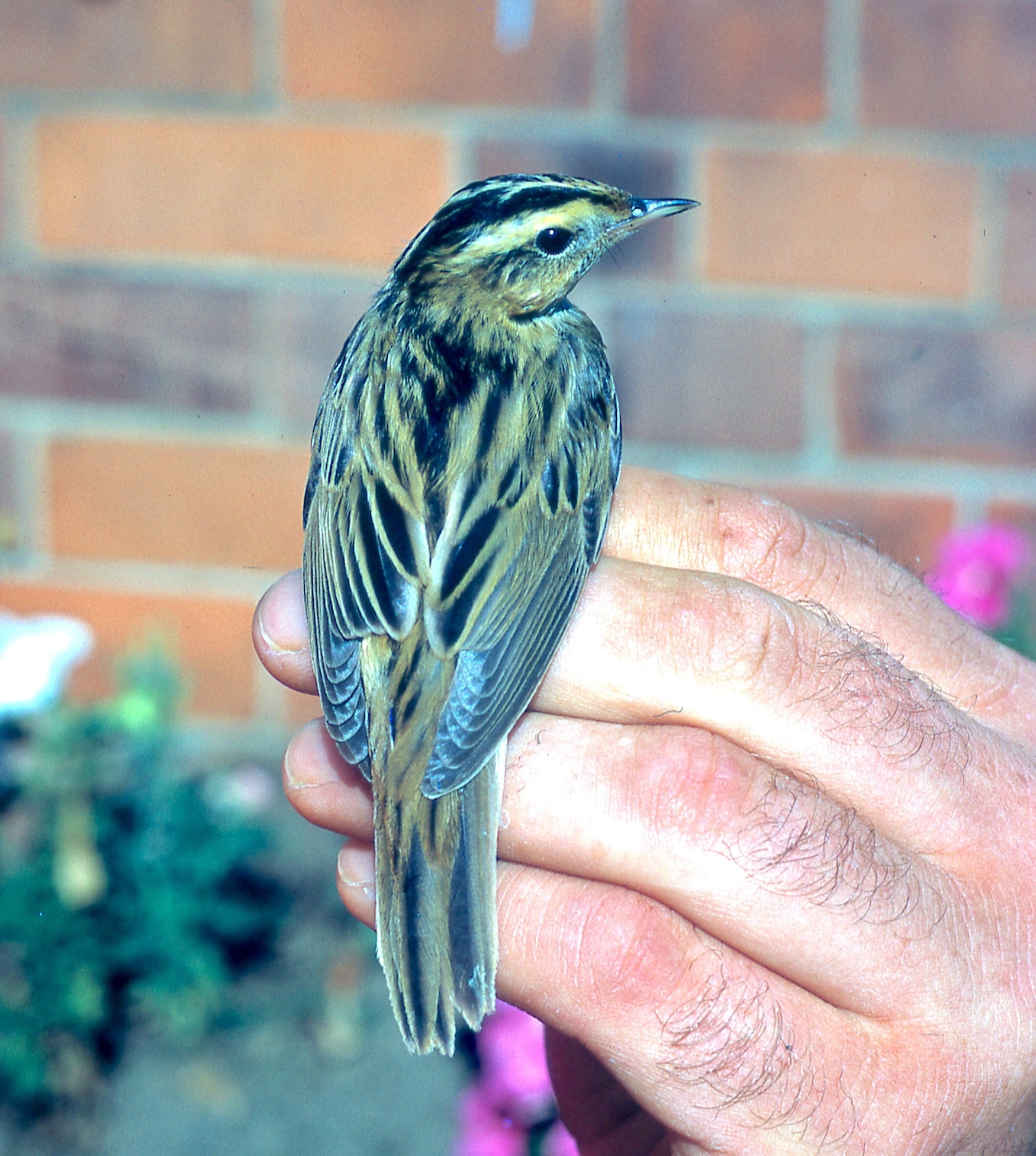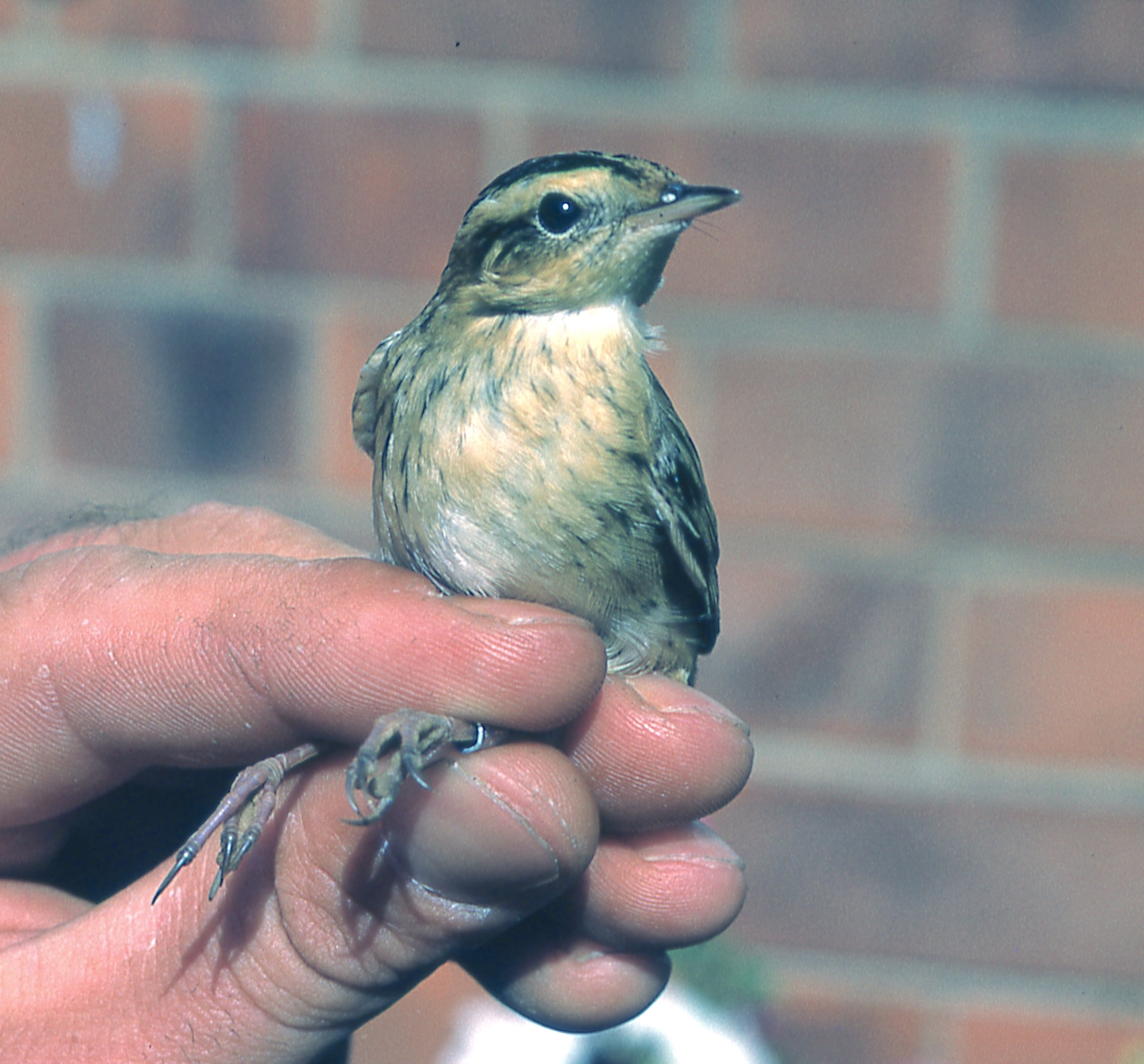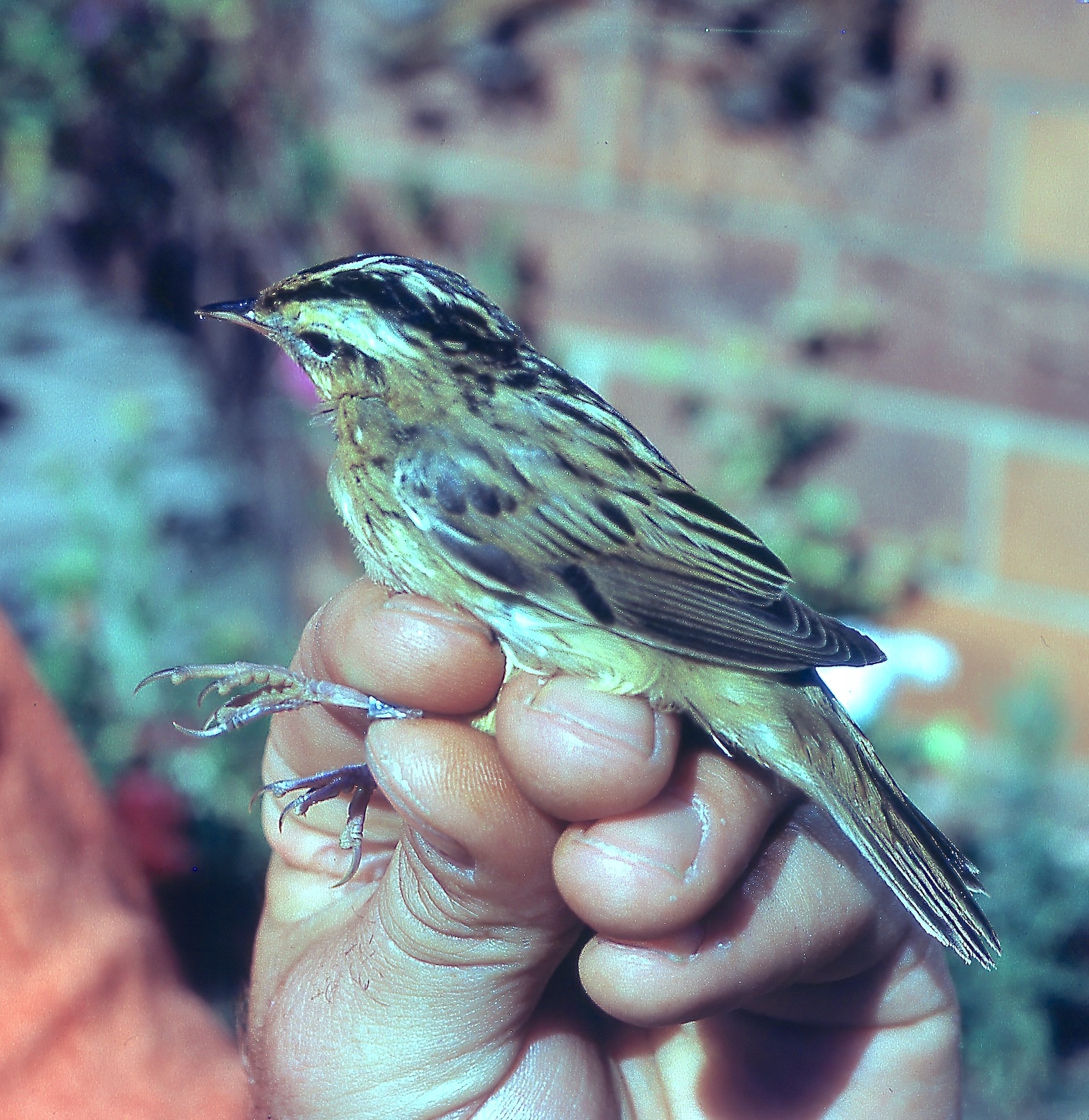Aquatic Warbler Acrocephalus paludicola



The West African wintering grounds weren't known until 2007 and numbers recorded in autumn in Western Europe show marked fluctuations from year to year. In the Loire Estuary, France, in 2018 an amazing 70 individuals were trapped and ringed during a 16-day period in late July-early August. Although it was originally a BBRC species, it became numerous enough to devolve to county records committees during 1983-2014. Although the total number of British records 1950-2018 stands at 1362 this masks the rapid decline of this species in eastern and central Europe and it returned to BBRC consideration in 2015. There have been 45 records 2010-2018, but only 15 since 2013, and it remains a Lincolnshire vagrant; another would be more than welcome.
| Site | First date | Last date | Count | Notes |
| Theddlethorpe | 08/09/1971 | - | 1 | 1CY bird, trapped |
| Saltfleetby | 29/10/1979 | - | 1 |
Finder’s report: Aquatic Warbler at Saltfleetby-Theddlethorpe NNR, September 8th, 1971, first county record.
by R. M. Jones (RMJ), J. B. Harrison (JBH), and C. F. Mapletoft (CFM).
Note: this account taken from the original BBRC submission. The RC (BBRC) report for 1971 noted that the total of at least 26 records (!) represented a new scale of occurrence for this species which at the time bred as near as the Netherlands, and had argued it to be a regular autumn migrant. An adult on Tresco on October 13th, 1971, was the third latest ever.
Circumstances
On the 8th of September 1971, JBH, CFM and myself (RMJ) were mist-netting migrants at Theddlethorpe Dunes, Mablethorpe, Lincs. during force 4-5 SE winds. A number of migrants had been caught during the morning including Willow Warbler, Chiffchaff, Pied Flycatcher, Redstart, Lesser Whitethroat etc, when at c.12.00 hr. an Acrocephalus sp. was extracted from a net set in Elderberry and Hawthorn bushes.
After a full description, wing formula and other measurements had been taken it was identified as an Aquatic Warbler (Acrocephalus paludicola) and subsequently ringed. The bird was taken to R. B. Wilkinson (RBW) of Gibraltar Point Bird Observatory for his scrutiny, and he agreed with all our data (except for slight differences in his and our ideas of colours – these are shown in brackets). The bird was released on the dunes at the south side of Skegness, and it flew strongly away into thick scrub.
Description
Head – black with yellowish central crown stripe. Supercilium yellowish cream (RBW bright yellowish buff).
Bill – upper mandible black with narrow yellow flange as far as tip. Lower mandible pinkish flesh with dark (blackish) tip. Gape was yellowish orange (with tongue spots).
Legs - flesh pink.
Eyes – irides brownish-olive.
Upperparts – mantle heavily streaked cream and black (RBW – bright buff and black); rump brownish yellow streaked black – less streaked than mantle; tail light brown with dark shaft streaks.
Underparts – cream with shades of yellow and buff intermingled; throat as underparts but slightly streaked dark brown; flanks as underparts but streaked dark brown (RBW – dark brown to black). Undertail coverts uniform creamish.
Wings – primaries mousey brown with pale buff fringes on outer webs; secondaries similar to primaries but with wider fringes; tertials black with striking buff fringes on outer and inner webs – these fringes being sharply demarcated from the black; primary coverts slightly darker than primaries; lesser, median, and greater coverts dark centres with buff fringes; bastard wing as primary coverts fringed buff on outer webs; underwing coverts off white.
Biometrics
Wing 62 mm; tail 45 mm; tarsus 22.5 mm; bill (to skull) 13.5 mm, (to feathers) 9.5 mm; rounded tail of pointed feathers 10 mm; weight 11.5 g at 12.00 hr.
Primaries and secondaries fairly fresh, tail much abraded. Aged as a juvenile/1CY.

